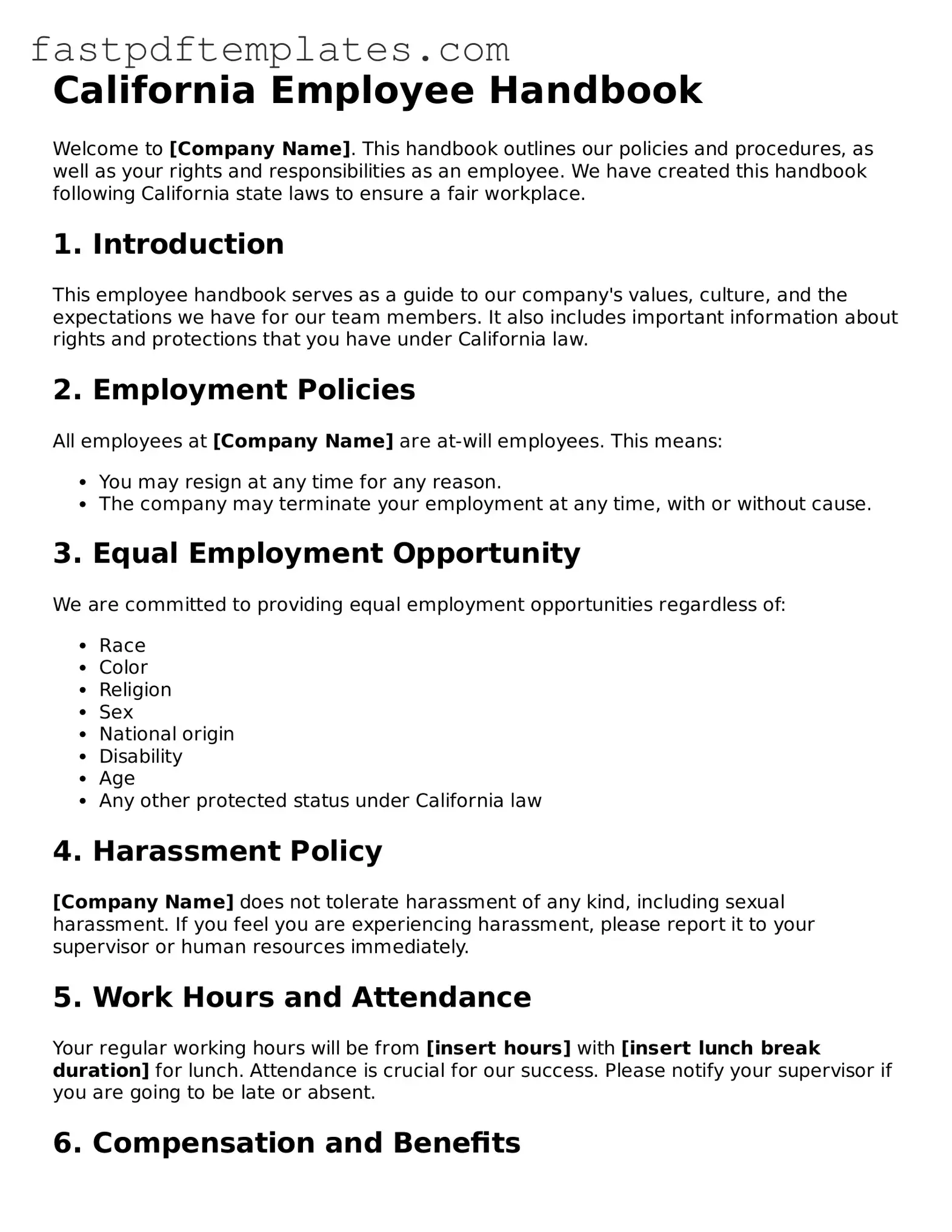The California Employee Handbook is similar to the Employee Manual, which serves as a comprehensive guide for employees within an organization. Both documents outline company policies, employee rights, and responsibilities. They provide essential information about workplace conduct, benefits, and procedures, ensuring that employees understand what is expected of them and what they can expect in return from their employer.
Another related document is the Workplace Safety Policy. This policy focuses specifically on health and safety regulations that employees must follow. While the Employee Handbook covers a broader range of topics, the Workplace Safety Policy delves deeper into safety protocols, emergency procedures, and reporting mechanisms for unsafe conditions, making it crucial for maintaining a safe work environment.
The Code of Conduct is another document that shares similarities with the Employee Handbook. It outlines the ethical standards and behavioral expectations for employees. While the Employee Handbook includes these aspects, the Code of Conduct emphasizes the importance of integrity, professionalism, and respect in the workplace, providing clearer guidelines on acceptable and unacceptable behaviors.
The Job Description document is closely related as well. Job Descriptions detail the specific roles, responsibilities, and qualifications required for each position within the organization. While the Employee Handbook provides an overview of company policies, Job Descriptions focus on individual employee expectations, helping to clarify each person’s contributions to the organization.
The Orientation Manual is another important document that parallels the Employee Handbook. It is typically provided to new hires during the onboarding process. The Orientation Manual introduces new employees to the company culture, policies, and procedures, while the Employee Handbook serves as a more detailed reference guide for ongoing employment, covering all aspects of the employee experience.
The Leave of Absence Policy is similar in that it outlines the procedures and entitlements related to taking time off from work. While the Employee Handbook may provide a general overview of leave policies, this document focuses specifically on the types of leave available, eligibility requirements, and the process for requesting time off, ensuring clarity for both employees and management.
The Performance Review Policy also shares similarities with the Employee Handbook. It details the process by which employee performance is evaluated, including criteria, frequency, and feedback mechanisms. While the Employee Handbook addresses general workplace policies, the Performance Review Policy provides specific guidelines for assessing and enhancing employee performance, fostering growth and development within the organization.
The Anti-Discrimination Policy is another document that aligns with the Employee Handbook. It outlines the company’s commitment to providing a workplace free from discrimination and harassment. While the Employee Handbook may touch on these issues, the Anti-Discrimination Policy offers a more focused approach, detailing the rights of employees and the procedures for reporting violations, thus promoting a fair and inclusive work environment.
Finally, the Employee Benefits Summary is a document that complements the Employee Handbook. It provides detailed information about the various benefits offered to employees, such as health insurance, retirement plans, and paid time off. While the Employee Handbook may briefly mention these benefits, the Employee Benefits Summary offers a comprehensive overview, helping employees understand their options and make informed decisions regarding their benefits.
